The Eora People
Sydney, before European settlement, was occupied by the Eora people who lived in small, nonhierarchical groups. There are many clans who are collectively called the Eora Nation.
The name Eora was the word that the Aboriginal people said when asked by the British where they came from. The Aboriginals answered "Eora", which may mean "here" or "from this place". However, other wordlists documented other meanings.
| Source | Spelling | Translation |
|---|---|---|
| Dawes[8] | Eeōra | Men, or people |
| Collins[9] | Eo-ra | The name common for the natives |
| King[10] | Eo-ra | Men or people |
| King[10] | Yo-ra | A number of people |
| Southwell[11] | E-ō-rǎh | People |
| Anon.[12] | Eō-ra (or) E-ō-rāh | People |
The Eora language first documented by William Dawes has frequently been called "The Sydney Language". The words written in Dawes notebooks were conveyed by an Australian Aboriginal woman, thought to be from the Cammeraygal clan of the Eora nation. See here
The Gadigal clan of the Eora Nation lived in the area called "Cadi" located south of Port Jackson.
Tribes living along the New South Wales coasts appear to have been relatively sedentary, having little communication with peoples over the inland ranges, and they could not understand the speech of folk living less than 100 miles (160 km.) away.
The Gadigal clan of the Eora Nation lived in the area called "Cadi" located south of Port Jackson.
When Governor Arthur Phillip arrived at New South Wales with the First Fleet, he estimated that the Aboriginal population of the Sydney district was about 1,500 people. Other estimates have ranged from as low as 200 to as high as 4,000. The Cadigal clan was estimated to have 50-80 people.
The name Eora is accepted for the tribal group around Port Jackson, instead of the hordal term Kamaraigal used in my 1940 work. David Collins (1798-1802) supplied a meaning of “black men” for Eora and wrote the term with a capital letter. John Hunter (1793:408), however, was the first to mention the word, giving it a meaning of “men or people.” On a later page of his vocabulary, he gave “yo-ra” with meaning of “a number of people.” The suffix -gal attached to certain locality names in the Sydney area was accepted by Hunter and later by Collins as indicating areas of residence of “tribes.” In the nomenclature of this work, they are names of hordes. While discussing the differences be tween Port Jackson people collectively and those of the Hawkesbury River who spoke a different dialect, Hunter, by inference recognized the existence of the larger groupings called tribes in this study.
The boundary between the Eora and the Daruk, who lived northwest of Sydney, was first established by observations during Governor Arthur Phillip’s explora tions in April 1791. Having ventured beyond the hordal territory of the Bidjigal, somewhat north of Castle Hill, his party was preparing to camp when his aboriginal companions came upon a young man and a boy who were of another tribe and spoke a different language or dialect. Subsequently, on the Hawkesbury River a few miles farther north, the governor met the same man and others of his horde, the Buruberongal. They were in possession of several canoes. Their camp was on the northern bank of the river but there were indications of their presence farther south. Phillip’s native helpers who had discovered a camp made by a hunter in the bush south of the river wished to destroy it on the excuse that it belonged to an enemy. Their own evident lack of security seemed to imply that they were very close to their own tribal boundary. Information on Eora hordes is incomplete.
The boundary between the Eora and the Daruk, who lived northwest of Sydney, was first established by observations during Governor Arthur Phillip’s explora tions in April 1791. Having ventured beyond the hordal territory of the Bidjigal, somewhat north of Castle Hill, his party was preparing to camp when his aboriginal companions came upon a young man and a boy who were of another tribe and spoke a different language or dialect. Subsequently, on the Hawkesbury River a few miles farther north, the governor met the same man and others of his horde, the Buruberongal. They were in possession of several canoes. Their camp was on the northern bank of the river but there were indications of their presence farther south. Phillip’s native helpers who had discovered a camp made by a hunter in the bush south of the river wished to destroy it on the excuse that it belonged to an enemy. Their own evident lack of security seemed to imply that they were very close to their own tribal boundary. Information on Eora hordes is incomplete.
Aboriginal Tribes of Australia, by Norman B Tindale. Read here
Archaeological remains tell us that the Eora people hunted and gathered as they moved about their lands. Some of the foods they may have consumed include, seals, dugongs, dolphins and whales, as well as shellfish and crustaceans.
 |
| Image from page 45 of "The Australian Museum magazine" (1921) Internet Archive Book Images |
"....a dead whale, in the most disgusting state of putrefaction, was seen lying on the beach, and at least two hundred Indians surrounding it, broiling the flesh on different fires, and feasting on it with the most extravagant marks of greediness and rapture".
Rock art depicting whales and other animals can also be found around Sydney, engraved into the sandstone, dating back about around 5,000 years.
Aboriginal groups often engaged in tribal warfare and rivalries between different clans were common. As Russian naval officer Aleksey Rossiysky wrote in 1814:
"Each man considers his own community to be the best. When he chances to meet a fellow-countryman from another community, and if someone speaks well of the other man, he will invariably start to abuse him, saying that he is reputed to be a cannibal, robber, great coward and so forth."
The ubiquity of this warfare between Aboriginal groups was noted, not only by the British who arrived in 1788 but in Aboriginal oral traditional storytelling. It appears that the tribal warfare was not motivated by the aim to conquer other groups, but to assert authority over them.
Internet Archive Book Images
Horatio Hale, an American scientist visiting Australia in 1840, identified four varieties of Aboriginal warfare: formal battles, ritual trials, raids for women and revenge attacks. Often these battles came to an end once there had been a few casualties: wounded or dead. The duration of these battles was often limited, as their intention was not to conquer, destroy or displace others.
"Dr Solander and myself went a little way into the woods and found many plants."
Joseph Banks Journal, 29 April 1770.
Two Aboriginal men approached the Endeavour but would not accept the gifts offered by Cook. This was perhaps an early sign that with no means of communication or understanding of each other's culture, things were bound to go wrong.
"I thought that they beckoned us to come ashore, but in this we were mistaken, for as soon as we put the boat in they again came to oppose us I fired a musket between the two which had no effect one of them took up a stone and threw at us".
- Cook's journal, 29 April 1770
Some other Aboriginal men returned and threw spears at Cook and his crew, but they ran off after two more rounds were fired. The adults left the scene but several Aboriginal children were found in the huts.
"We found here a few Small hutts made of the bark of trees in one of which were four or five small children with whome we left some strings of beeds &C".
- Cook's journal, 29 April 1770
The First Fleet
The First Fleet of 11 ships left Portsmouth, England, in 1787, with more than 1480 men, women and children on board, bound for Terra Australis (the great southern land). The mood on the ship can be imagined, with the outcast convicts brooding over "the impracticability of returning home, the dread of a sickly passage, and the fearful prospect of a distant and barbarous country" (Watkin Tench, 1789).
And so began the clash of cultures, as Aboriginal people had a very different concept of land ownership to Europeans, who sort to impose what they saw as a superior system of government, legal system, Christianity, institutions, such as schools, hospitals and farming.
In April 1789, 15 months after the arrival of the First Fleet, a major smallpox epidemic broke out. This epidemic was disastrous for Aboriginal populations in the area. Debate rages about how smallpox entered Australia at this time.
Rock art depicting whales and other animals can also be found around Sydney, engraved into the sandstone, dating back about around 5,000 years.
| Aboriginal carvings, Nth Bondi, Sydney, Australia. Sardaka |
"Each man considers his own community to be the best. When he chances to meet a fellow-countryman from another community, and if someone speaks well of the other man, he will invariably start to abuse him, saying that he is reputed to be a cannibal, robber, great coward and so forth."
The ubiquity of this warfare between Aboriginal groups was noted, not only by the British who arrived in 1788 but in Aboriginal oral traditional storytelling. It appears that the tribal warfare was not motivated by the aim to conquer other groups, but to assert authority over them.
 |
| Aboriginal man making fire, Image from page 298 of "The Australian Museum magazine" (1921) |
Horatio Hale, an American scientist visiting Australia in 1840, identified four varieties of Aboriginal warfare: formal battles, ritual trials, raids for women and revenge attacks. Often these battles came to an end once there had been a few casualties: wounded or dead. The duration of these battles was often limited, as their intention was not to conquer, destroy or displace others.
Captain Cook
On April 29 1770, on his way up the east coast of Australia, the HMS Endeavour arrived at Botany Bay’s Inscription Point, and Captain James Cook and his crew stepped ashore and surveyed the damp, marshy and unfamiliar surroundings.
On April 29 1770, on his way up the east coast of Australia, the HMS Endeavour arrived at Botany Bay’s Inscription Point, and Captain James Cook and his crew stepped ashore and surveyed the damp, marshy and unfamiliar surroundings.
Initially, Cook named the place Stingrays Harbour, as there were many of these animals in the water. However, Cook changed the name to '"Botanist Botany Bay", as Joseph Banks and Dr Solander had collected many plant specimens there.
 |
| By Phillips Fox, World's News (Sydney, NSW : 1901 - 1955), Saturday 3 June 1939 |
 |
| Replica of HM Bark Endeavour, Dennis4trigger |
Joseph Banks Journal, 29 April 1770.
Two Aboriginal men approached the Endeavour but would not accept the gifts offered by Cook. This was perhaps an early sign that with no means of communication or understanding of each other's culture, things were bound to go wrong.
"I thought that they beckoned us to come ashore, but in this we were mistaken, for as soon as we put the boat in they again came to oppose us I fired a musket between the two which had no effect one of them took up a stone and threw at us".
- Cook's journal, 29 April 1770
Some other Aboriginal men returned and threw spears at Cook and his crew, but they ran off after two more rounds were fired. The adults left the scene but several Aboriginal children were found in the huts.
 |
| A 19th-century engraving showing natives of the Gweagal tribe opposing the arrival of Captain James Cook in 1770 |
- Cook's journal, 29 April 1770
Cook was the first European to visit the east coast of Australia. Dutch explorer, Willem Janszoon, made landfall near Weipa in Queensland in 1606.
The Gweagal clan of Botany Bay were not to know that the arrival of Cook was but a taste of what was to come some eighteen years later, with the landing of the First Fleet (1788), backed by the legal principle, stemming from the Roman law of Terra Nullius.
This law was based on complex philosophical ideas of the times, especially the ideas of John Locke, related to the belief that societies without agriculture, did not possess property rights in land. And the common belief that colonisation by the British would bring a civilising and Christianising influence to wild and untamed lands. Interestingly, it seems that the Norman conquest of England would also provide the model on which British colonialism proceeded.
 |
| Aboriginal scarred tree, Daily Telegraph (Sydney, NSW : 1883 - 1930), Friday 10 September 1926 |
This law was based on complex philosophical ideas of the times, especially the ideas of John Locke, related to the belief that societies without agriculture, did not possess property rights in land. And the common belief that colonisation by the British would bring a civilising and Christianising influence to wild and untamed lands. Interestingly, it seems that the Norman conquest of England would also provide the model on which British colonialism proceeded.
The First Fleet of 11 ships left Portsmouth, England, in 1787, with more than 1480 men, women and children on board, bound for Terra Australis (the great southern land). The mood on the ship can be imagined, with the outcast convicts brooding over "the impracticability of returning home, the dread of a sickly passage, and the fearful prospect of a distant and barbarous country" (Watkin Tench, 1789).
The convicts were unwilling participants in the British Government's penal colonisation scheme, but so were the Eora Aboriginal people, who called the new arrivals of 1788, the "Bèerewalgal', meaning "people of the clouds".
 |
| The First Fleet entering Port Jackson, NSW, Australian Town and Country Journal (Sydney, NSW : 1870 - 1907), Saturday 16 December 1899 |
However, reports such as those of Alexandro Malaspina in 1793 and Louis de Freycinet in 1802 convey the impression that the settlers' relations with the Eora were generally agreeable. For example, Governor Phillip chose not to retaliate after he was speared by Willemering at Kayemai (Manly Cove) on 7 September 1790.
 |
| Aboriginal people at Botany Bay, NSW, Australasian (Melbourne, Vic. : 1864 - 1946), Saturday 12 January 1901 |
The Eora were apprehensive but they were also curious about the foreigners. They had the idea that the British men must actually be women, as they had no facial hair. This led to the dropping of pants.
The Aboriginal group made signs and pointed, "where it was distinguishable" and Lieutenant Philip Gidley King ordered one of the sailors to "undeceive them" on that matter. There was a shout of Admiration and a great number of Aboriginal woman and girls appeared suddenly on the Beach, according to the words of King: "All in puris naturalibus pas meme lafeuille de figeur" (completely naked). King then tried to cover one of the women with his handkerchief.
The French
 |
| Aboriginal woman, Daily Telegraph (Sydney, NSW : 1883 - 1930), Friday 10 September 1926 |
The French
One week after the arrival of the First Fleet, the ships, la Boussole & l’Astrolabe commanded by Monsieur De La Perouse sailed into Botany Bay, the same day that Governor Phillip was moving to the more hospitable Sydney Cove.
In January of 1788, after rejecting Botany Bay as unsuitable, Governor Arthur Phillip chose Sydney Cove in the harbour of Port Jackson, as the site of the first English outpost and convict colony in Australia.
The French stayed at Botany Bay for six weeks and built a stockade around their camp, with two small mounted cannons, which were kept ready for action. La Perouse, King noted, was less well disposed to the local people than the British, as Samoans had attacked a group of his men in 1787, killing 12 and wounding 20.  |
| la Boussole & l’Astrolabe |
Culture Clash
The Eora people were shocked and overwhelmed by the new arrivals, and as Aboriginal people had no immunity to many of the diseases which had previously wiped out huge numbers of people in Europe, many died of smallpox within the first two years of contact with the Europeans. See here
There were so many points at which the two cultures could not understand each other. Such as when Colby's wife (an Aboriginal man), died in childbirth and the living baby was placed in a shallow grave and hit with a stone. Colby's response, which horrified the British, was based on the fact that no woman could be found to feed the baby.
The British were also horrified by the Aboriginal concept of blood debt, whereby a murderer's relatives could be killed to settle the matter. The actual murderer may experience no punishment. Likewise, the Aboriginal people were appalled by the barbarity of the British system of justice, which involved horrific floggings and hanging.
However, despite many tales being written about the convicts receiving rum and engaging in scenes of debauchery after they landed, there is no real evidence that this ever happened. (see here)
However, despite many tales being written about the convicts receiving rum and engaging in scenes of debauchery after they landed, there is no real evidence that this ever happened. (see here)
But things were changing. Captain John Hunter began to survey, chart and rename the land features of Port Jackson. Warrane became Sydney Cove, Wogganmagule (Farm Cove), Pannerong (Rose Bay) and Booragy (Bradleys Head). Burramatta ("eel water place") was initially called Rose Hill but later renamed Parramatta by Governor Phillip.
Some Aboriginal place names still exist around Sydney, however. For example: Bondi, Cabramatta, Cogee, Jannali, Kurnell, Parramatta and Maroubra. (see more here)
There were some signs of hope between the Aboriginals and the British, as Lieutenant William Bradley wrote, that soon after part of the First Fleet landed: “These people mixed with ours”... “and all hands danced together.”
Some Aboriginal place names still exist around Sydney, however. For example: Bondi, Cabramatta, Cogee, Jannali, Kurnell, Parramatta and Maroubra. (see more here)
 |
| Sydney Cove, Port Jackson in the County of Cumberland, from a drawing made by Francis Fowkes in 1788. National Library of Australia, Canberra, Australia |
This event symbolised the hope and good intentions outlined in King George's directions to governor Philip, that he must, "endeavour by every possible means" for "Our Subjects to live in amity and kindness", with Aboriginal people.
Unfortunately, the British and the Aboriginal people had very different cultures and concepts of the world and were often at cross-purposes.
Between 1788 and 1792, convicts and the British military made up the majority of the population of the colony, and the Aboriginal population became engaged in resistance. The Aboriginal resistance leader, Pemulwuy, who had a turned eye and a foot that was damaged by a club, perhaps to mark him as a "clever man" or healer, led a guerrilla war against the British settlement. He was killed on 2nd June 1802. (interestingly, the convict that almost killed Pemulwuy, John “Black” Caesar, was one of 12 prisoners of African origin on the First Fleet)
In 1796, the population of Sydney stood at 2,953.
 |
| Sydney town and cove, 1798, Thomas Watling 1762- c.1814; Edward Dayes 1763-1804; James Heath 1757-1834; Frank Walker 1861-1948 |
As a penal colony for British outcasts, early Sydney was a very harsh place and the survival of the early settlement was very precarious, as food supplies were limited and the strange and unfamiliar environment led to crop failure and near starvation.
The colony's second harvest at Farm Cove was as disastrous as the first, due to drought. And so, the government abandoned agriculture at Farm Cove for the arable plains, beside the Parramatta River. (Rose Hill)
James Ruse, a former convict produced the first successful wheat harvest in NSW, in 1789. Although there was not enough grain to make flour for the colony, he did produce enough seeds for the next crop, which luckily, proved successful.
James Ruse, a former convict produced the first successful wheat harvest in NSW, in 1789. Although there was not enough grain to make flour for the colony, he did produce enough seeds for the next crop, which luckily, proved successful.
 |
| In October 1793, James Ruse sold his farm to the surgeon John Harris, who built this colonial cottage which exists today, at 9 Ruse Street, Harris Park, City of Parramatta, Sydney |
Experiment_Farm_Cottage_107.jpg) |
| Inside Experiment Farm Cottage, at 9 Ruse Street, Harris Park, City of Parramatta, Sydney |
By October 1788, the first boat, named, the Rose Hill Packet (The Lump), was built in the colony and launched at Campbells Cove and soon enough, the Parramatta River was becoming a busy waterway.
Free Settlers
 |
| Parramatta River with a distant view of the western mountains, taken from Windmill Hill, Sydney, circa 1797. National Library of Australia |
Free Settlers
The Rose family eventually moved to fertile land on the north bank of the Hawkesbury River, at Wilberforce, in 1802 and built Rose Cottage, which survives today as the oldest timber house in Australia. The oldest surviving building in Sydney is Cadman's Cottage built 1815-16, as a coxswains barracks.
The French presence made Governor King quite anxious. Recent evidence shows that King was right to feel this way, as Baudin had prepared a report for Napoleon on various ways to invade and capture the British colony at Sydney Cove.
François Péron, part of the Baudin expedition, also wrote a secret Mémoire sur les établissements anglais à la Nouvelle Hollande, advocating a French conquest of Port Jackson with the aid of rebellious Irish convicts
 |
| The Géographe and the Naturaliste. Baudin stopped at the British colony at Sydney for supplies, 1802 |
 |
| Sydney Town, approximately 1802, [London](Paternoster Row) : Published by M. Jones, Dec. 24, 1802 |
In 1803, The Sydney Gazette and New South Wales Advertiser became the first newspaper printed in Australia.
Rebellion
In 1808, an armed takeover of government called the Rum Rebellion occurred, when the men of the New South Wales Corps rebelled against Governor William Bligh.
The Town Grows
By 1810 Sydney was starting to look like a town and less like a camping ground. Macquarie Street was laid out in this year and the population was around 6,200 people. Flour mills, breweries and shipbuilding enterprises were also operating successfully.
Though very far from perfect (see here), Lieutenant Colonel Lachlan Macquarie, who became the fifth Governor of New South Wales in 1810, was instrumental in transforming Sydney from a penal colony to a prosperous Georgian town.
In 1811 Governor Lachlan Macquarie established the second Sydney Common, extending south from South Head Road (now Oxford St) to where Randwick Racecourse is today.
Australia's first bank, the Bank of New South Wales opened in Sydney in 1817, at a building owned Mary Reibey, in Macquarie Place. At the time, Sydney did not have its own currency and so barter and promissory notes were used and Governor Macquarie himself had to resort to using cattle and rum when making payments for the building of Sydney Hospital.
Hyde Park Barracks was built in 1819, designed by Francis Greenway. Governor Macquarie noted that after the confinement of the male convicts to the Barracks at night, there was "not a tenth part of the former Night Robberies and Burglaries".
Also, in 1819, two priests were authorised by the British government to minister to the Catholics of the NSW colony. The foundation stone, laid by Governor Macquarie, for the first St Mary's Cathedral, Hyde Park, was laid on 29 October 1821.
The Devonshire Street Cemetery was established in 1820, and operated until 1866, when the cemetery was resumed to allow for the development of Central railway station.
The first gas street lights were turned on in 24 May 1841 to celebrate the birthday of Queen Victoria.
The first observatory in New South Wales was established by Captain William Dawes in 1788, at a place now called Dawes Point, under the southern approach to Sydney Harbour Bridge.
In 1892, the Strand Arcade was described as, "The finest public thoroughfare in the Australian colonies" opened.
Frog Hollow Reserve, in Surry Hills, from 1895 to 1904, was known as "one of the most depraved areas of Sydney". The area was about 9 metres below the surrounding streets and approachable from three directions only, by a steep flight of stone steps.
1. petty offers' boat off to the ship. 2. Sailors leaving to rejoin their ships. 3. Waiting for the boats to go off to the warships. 4. Visitors being taken in launches to ships. Australasian (Melbourne, Vic. : 1864 - 1946), Saturday 23 August 1919
The Conservatorium of Music officially opened in May 1915 with a grand
concert.
In 1921 the Commonwealth Government purchased land in Mascot for a public airfield. Sydney airport began operating in 1924.
The Capitol Theatre in Sydney’s Haymarket, opened in 1927. The building was originally a fruit and vegetable market constructed in 1893.
.jpg)
Australia's March to Nationhood' parade outside the Queen Victoria Building on George Street during the 1938, Royal Australian Historical Society
The Sydney Harbour Bridge was opened 19 March 1932, with New South Wales Premier, Jack Lang, ready to cut the ribbon. However, Captain Francis de Groot of the New Guard, pro-monarchy political party, got in before Lang and declared the bridge to be open in the name of “the decent and respectable people of New South Wales”. De Groot was arrested for offensive behaviour in a public place and fined five pounds.
Town Hall railway station also opened in 1932. It is built on top of our oldest colonial cemetery, the Old Sydney Burial Ground. Wynyard railway station opened the same year.
Luna Park was constructed in 1935 on the northern shore of Sydney Harbour.
The 1938 British Empire Games were held in Sydney. Australian athlete, Decima Norman, won five gold medals in track and field and Margaret Dovey, the future wife of Australian prime minister, Gough Whitlam, finished sixth in the 220 yards breaststroke.
The Day of Mourning protest was organised by the Aborigines Progressive Association (APA), on 26 January 1938, protesting their treatment and appealing to the Australian Nation. (The Uluru Statement from the Heart is also directed to the Australian public).
The AWA Tower opened in 1939. This company, Amalgamated Wireless Australasia Limited, was the first to manufacture televisions in Australia.

The AWA Tower from Wynyard Street, Sydney, in 1939. national Library of Australia
At War
On 3 September 1939, prime minister Robert Menzies declared that Australia was at war. In May and June 1942, three Japanese midget submarines, two crew members in each, were found in Sydney Harbour.
Times a-Changing
The 1960s was a time of immense change with the emergence of organised crime and corruption in Sydney. This was the time of Lennie McPherson, Abe Saffron and George Freeman.
In 1966, Joern Utzon quit the construction of the Sydney Opera House.
This green bans movement of Sydney and Melbourne in the 1970s was the first of its type in the world. At that time, the Builder Labourers Federation (BLF), was led by Jack Mundey, Joe Owens and Bob Pringle. Green bans, with the combined power of citizens and the BLF, saved The Rocks and Woolloomooloo from demolition.
The Sydney Opera House was formally opened on 20 October 1973. The estimated cost to build this structure was $7 million. The final cost was $102 million.
Government House Sydney
Art Gallery of New South Wales
Naval Heritage Centre
Sydney Tramway Museum
Elizabeth Bay House
 |
| First issue of Sydney Gazette and New South Wales Advertiser, 5 March 1803 |
Rebellion
In 1808, an armed takeover of government called the Rum Rebellion occurred, when the men of the New South Wales Corps rebelled against Governor William Bligh.
 |
| Arrest of Govenor Bligh. A propaganda cartoon created within hours of William Bligh's arrest, portraying him as a coward |
The Town Grows
By 1810 Sydney was starting to look like a town and less like a camping ground. Macquarie Street was laid out in this year and the population was around 6,200 people. Flour mills, breweries and shipbuilding enterprises were also operating successfully.
With the assistance of the convict, Francis Greenway, appointed civil architect by Macquarie, he set about the building of hospitals, churches, schools, military and convict barracks and well-laid-out streets, accomplished with the help of convict labour. Australia's first post office and the Royal Botanic Gardens in Sydney were established in 1810.
In 1811 Governor Lachlan Macquarie established the second Sydney Common, extending south from South Head Road (now Oxford St) to where Randwick Racecourse is today.
 |
| Mary Reibey, baptised Molly Haydock, circa 1835. She was an Australian merchant, shipowner and trader. Originally a convict deported to Australia |
 |
| Convicts' Barracks - Hyde Park Barracks Museum - Sydney - Australia, Adam Jones |
 |
| Painting by Fred Garling of the first St Mary’s Catholic church, Hyde Park, Sydney, 1840s |
.jpg) |
| Devonshire Street Cemetery, Sydney, circa 1902. NSW State Records |
Home-grown industry also increased during Macquarie's period with increasing trade involving, wool, whaling and sealing. In the 1820s, the first wharves were constructed.
The construction of the Darlinghurst Gaol began in 1822 and finished in 1824, using convict labour, but the site was not used for 12 years due to lack of funds. Later, when the Australian poet Henry Lawson was incarcerated here, he dubbed it Starvinghurst Gaol.
The construction of the Darlinghurst Gaol began in 1822 and finished in 1824, using convict labour, but the site was not used for 12 years due to lack of funds. Later, when the Australian poet Henry Lawson was incarcerated here, he dubbed it Starvinghurst Gaol.
The British Government legislated for a Legislative Council to be established in New South Wales in 1823, to assist the Governor in the legislative process. This was a step toward a democratic system of government in NSW.
The first Sydney Royal Easter Show was also held in 1823.
St James' Anglican Church, in Kings Street, Sydney, was consecrated, February 1824.
The first Sydney Royal Easter Show was also held in 1823.
St James' Anglican Church, in Kings Street, Sydney, was consecrated, February 1824.
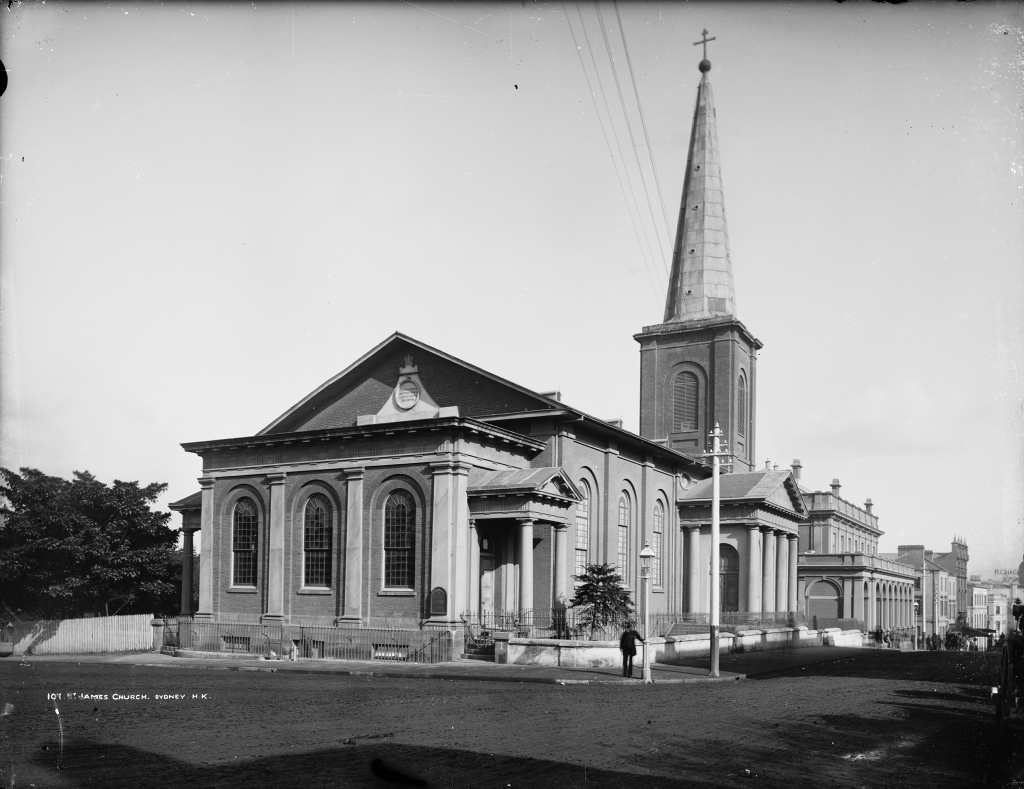 |
| St James' Church in about 1890, by Henry King. Powerhouse Museum |
Arts and Culture
German-born Charles Rodius was a European artist known for documenting the Eora after contact. Working as a draughtsman and engraver in Paris, he was charged with theft and sent to New South Wales in 1829.
German-born Charles Rodius was a European artist known for documenting the Eora after contact. Working as a draughtsman and engraver in Paris, he was charged with theft and sent to New South Wales in 1829.
Once in Australia, Rodius was assigned, without salary, to the Department of Public Works. Rodius frequented the nearby Domain, where he made many sketches of Aboriginal people, including the View from the Government Domain, Sydney, 1833, in which fishermen at Woolloomooloo Bay (Walla-mulla) wore cut-off trousers, yet still used the traditional mooting or pronged fishing spear.
The first Australian Subscription Library was started by a group of wealthy Sydney citizens in 1826 and Australia's first public museum was established in Sydney in 1827.  |
| Charles Rodius - views of Sydney and Parramatta, 1833. State Library of NSW |
If you happened to be visiting the Sydney Museum on 21 September 1874, you may have seen Gerard Krefft, the museum's director at the time, being carried on a chair by two men. Krefft, one of the very few supporters of Darwinism in Australia during the 1870s, had been fired and was thrown out onto the street. (read and listen here)
The Aboriginal people in Sydney as seen by Captain Abel du Petit-Thouars, 24 November to 9 December 1838 (Warning: this is a confronting read)
By the 1840s, the population of Sydney was around 35,000, and the transportation of convicts had ceased. In 1841, Sydney streets were lit by gas from Millers Point Gasworks and by 1842, Sydney had a mayor.
On April 18, 1831, the Sydney Herald was founded, with only 750 copies with four pages printed. In 1840, it became a daily paper.
The Sydney Mechanics' School of Arts was founded in 1833, with the aim to increase further education for working men through public lectures and classes.
The Sydney Mechanics' School of Arts was founded in 1833, with the aim to increase further education for working men through public lectures and classes.
 |
| School of Arts building, Pitt Street, circa 1869, State Library of NSW |
 |
| Sydney Gazette and New South Wales Advertiser (NSW : 1803 - 1842), Tuesday 2 August 1836 |
Convict System Finishes
Australia's first political party, the Australian Patriotic Association formed in 1835, with the aim to bring about democratic government. One of its leaders being the prominent citizen, William Wentworth.
Australia's first political party, the Australian Patriotic Association formed in 1835, with the aim to bring about democratic government. One of its leaders being the prominent citizen, William Wentworth.
Government House was built in 1845. In 1850, the University of Sydney was established as Australia's first tertiary institution, encompassing Grose Farm, which had been granted to Lieutenant-Governor Francis Grose in 1792.
Commerce, Industry and Science
By the 1850s, with the gold rush in full swing, Millers Point and The Rocks were thriving hives of activity. The wharves of Millers Point were the commercial hub and the place where the flood of immigrants landed.
 |
| Sydney University as viewed from Parramatta Road in the early 1870s |
Commerce, Industry and Science
By the 1850s, with the gold rush in full swing, Millers Point and The Rocks were thriving hives of activity. The wharves of Millers Point were the commercial hub and the place where the flood of immigrants landed.
The Rocks, named by the convicts who lived there, became renown for its brothels and villainy. Of course, The Rocks was also a place of opportunity and it is the place where convict and businesswoman Mary Reibey got her start.
In 1854 the Sydney Cricket Ground opened. Iniatially, part of the Sydney Common, south of Victoria Barracks, was granted to the British Army to use as a garden and cricket ground.
By 1855, the first train line was in operation from Redfern to Parramatta. The original Sydney station opened in the same year in an area known as Cleveland Fields. This station (one wooden platform in a corrugated iron shed), called Sydney Terminal, had Devonshire Street as its northern boundary.
.jpg) |
| Argyle Cutting, The Rocks, Sydney, circa 1870 |
 |
| Reversed photograph looking east towards Circular Quay from Princes Street, The Rocks, State Library of NSW, n.d. |
.jpg) |
| England v Australia at SCG, 27 January 1883, State Library of NSW |
With the gold rush, Australia transformed from a forbidding place where nobody wished to be sent, to a place overrun with hopeful fortune seekers. Sydney also became more multicultural at this time.
The first observatory in New South Wales was established by Captain William Dawes in 1788, at a place now called Dawes Point, under the southern approach to Sydney Harbour Bridge.
Dawes made recordings of rainfall, wind, temperature and air pressure. Governor Thomas Brisbane came to Australia in 1821, and set up a private observatory at Parramatta. Later in 1858, Sydney Observatory was built at the highest natural point in Sydney, marking an important moment in Sydney's scientific development, being concerned with timekeeping, meteorology and astronomy.
In 1891 the population of the city and suburbs of Sydney was 399, 270.
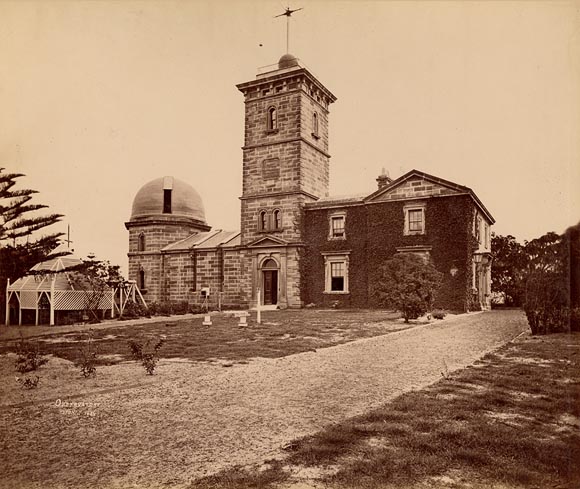 |
| The Sydney observatory in 1874, Upper Fort Street, Millers Point, City of Sydney, |
By 1860 there were six British colonies in Australia.
In 1861 the population of the city and suburbs was at 95,000.
In 1861 the population of the city and suburbs was at 95,000.
 |
| Cuthbert's Ship Building Yard : Sydney, New South Wales : photographed by Freeman Brothers. Circa 1865 |
 |
| Circular Quay, Sydney Harbour c 1868, Australian National Maritime Museum on The Commons |
 |
| Express and Telegraph (Adelaide, SA : 1867 - 1922), Wednesday 11 March 1868 |
Sydney's first tram was horse-drawn, introduced in 1861, running from the old Sydney railway station to Circular Quay, along Pitt Street. Steam trams operated from 1879, many of them built in Australia and electric trams began in Sydney in 1890. However, by the early 1900s, cars were becoming cheaper to buy and the last tram operated on the La Perouse and Maroubra Beach lines, on the 25 February 1961.
In 1869, the Sydney Free Public Library opened with 20,000 books, on the corner of Macquarie and Bent Streets.
The telegraph linked the six colonies of Australia in 1872, helping to increase communication and in the same year, the first Glebe Island Bridge was built. 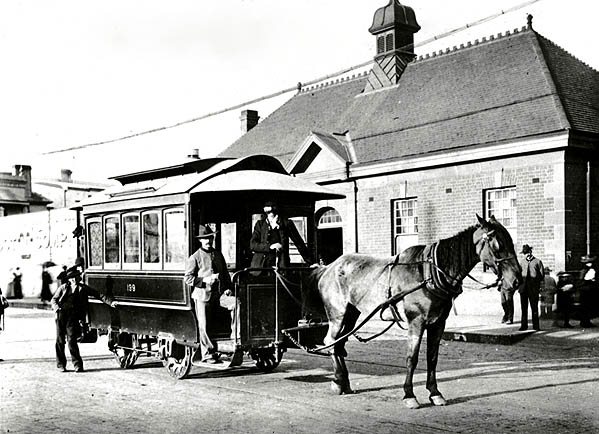 |
| Horsedrawn tram which ran between Newtown Station and St Peters Dated, circa 01/01/1894 |
 |
| Steam tram on George Street West, Sydney, circa 1889. national Library of Australia |
 |
| The first Glebe Island Bridge in 1872, (New South Wales. Government Printing Office) |
 |
| Sydney Harbour from Fort Macquarie, Blue Mountains City Library |
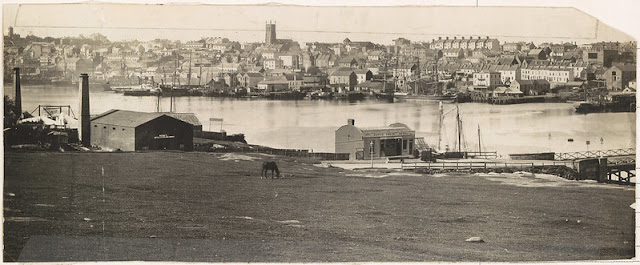 |
| Sydney from Pyrmont, NSW, Dated: 31/12/1870, NSW State Archives |
Centennial Park was opened in 1888, as the "people's park", by Sir Henry Parkes. And, from 1869 to 1889, Sydney's, high Victorian, Town Hall, was built on the Old Sydney Burial Ground, set aside in September 1792, by Governor Phillip.
Sydney's early shops were set up in the homes of shopkeepers. But by the 1840s, specialist shops began to be established. Anthony Hordern senior, from Staffordshire, England, arrived in Sydney on the Phoenix on 6 August 1823, and set up a drapery business at 12 King Street. In 1838, David Jones, a Welsh immigrant opened a store on the corner of George Street and Barrack Lane in Sydney. The Strand Arcade opened in 1892.
By 1871, the population of Sydney was almost at 138,000 people and in 1900, 481,000 people, called Sydney home.
Waverley Cemetery located on the cliff-tops at Bronte opened in 1877.
 |
| Sydney Town Hall as it appeared in the early 1900s facing north with St. Andrew's Cathedral to the left. The Powerhouse Museum |
 |
| George and Liverpool Streets Sydney, between circa 1884 and circa 1917 |
Waverley Cemetery located on the cliff-tops at Bronte opened in 1877.
The City Grows
 |
| King Street, Sydney, from corner of George St looking eastward - showing condition of awnings, verandahs, signboards, circa 1880. NSW State Archives |
The Sydney International Exhibition was held in 1879, in the Garden Palace, which was a large, purpose-built exhibition building. This building, also had a wooden annexe, to house the colony's art collection for a period. The only remains of the building today, are the carved sandstone gateposts and wrought iron gates, located on the Macquarie Street entrance to the Royal Botanical Garden.
_(cropped).jpg) |
| The Garden Palace, on September 22nd 1882 NSW State Records |
 |
| Circular Quay, Sydney from Fred Hardie, circa 1892-1893 |
The houses here were literally piled on top of each other and police claimed that this enclave had bred some of the most "desperate and dangerous criminals" they had encountered. One of these was Samuel "Jewey" Freeman, leader of the Riley Street Gang. (see here)
 |
| Houses and gardens in a slum area, Sydney, 11 April 1940, Fairfax archive of glass plate negatives |
The Romanesque Revival style, Queen Victoria Building, opened in 1898. Mei Quong Tart's tearoom, called, Elite Hall, was located on the ground floor. Mei Quong Tart was born in China in 1850, but while living in Australia, he acquired a Scottish accent, played the bagpipes and had the manner of an English gentleman.
 |
| King Street, Sydney from Pitt Street, looking East, Quong Tart's Tea House, on right, February-March 1895 |
 |
| Ferry boats starting for Neutral Bay and Milson's Point, Sydney NSW, Australian Town and Country Journal (Sydney, NSW : 1870 - 1919), Saturday 11 March 1899 |
 |
| Departure of the Second Contingent of New South Wales Troops for the Transvaal (NSW Boer War Contingent). Australian Town and Country Journal (Sydney, NSW : 1870 - 1919), Saturday 11 November 1899 |
By 1900 Sydney's population was 481,000.
Becoming One Nation
On 1 January 1901, the federation of the colonies occurred. The prison colony of Sydney had changed beyond recognition and was now part of the Commonwealth of Australia.
A crowd of more than 100 000 people witnessed Lord Hopetoun being sworn-in as Australia's first Governor-General. He then proclaimed the Commonwealth of Australia and swore-in the Prime Minister, Sir Edmund Barton, and his ministry.
In 1902 the Second Pyrmont Bridge was built.
Strike A Light!
 |
| Pitt St, Sydney, circa 1900, from The Powerhouse Museum Collection |
Becoming One Nation
On 1 January 1901, the federation of the colonies occurred. The prison colony of Sydney had changed beyond recognition and was now part of the Commonwealth of Australia.
A crowd of more than 100 000 people witnessed Lord Hopetoun being sworn-in as Australia's first Governor-General. He then proclaimed the Commonwealth of Australia and swore-in the Prime Minister, Sir Edmund Barton, and his ministry.
 |
| Federation celebrations, Sydney, 1901, National Library of Australia |
.jpg) |
| The departure of the Duke and Duchess of Cornwall and York from Farm Cove, Sydney, 6 June 1901. NSW State Archives |
 |
| Dockyard from Millers Point, Sydney Harbour, circa 1905 Australian National Maritime Museum |
Strike A Light!
On the evening of 8 July 1904, a switch-key was turned on at the Powerhouse in Pyrmont, and the city of Sydney was transformed by the glow of electric-powered light for the first time. However, Tamworth NSW was first to get electric street lights, on 9 November 1888.
Bondi Surf Bathers' Life-Saving Club, Australia's oldest Surf Life Saving Club, was founded in 1907. In the same year, the Waverly Shire Council regulations required male bathers to wear a skirt-like tunic swimming costume, with a skirt reaching at least to the knees and the arms concealed to near the elbows. Protests from the media and public were "prompt, universal and absolute" and the proposal was dropped.
Man O'War Steps
 |
| Sydney's first electric lights were witched on in July 1904. This photo shows Martin Place in the CBD lit up in 1937. Ausgrid photos |
WWI
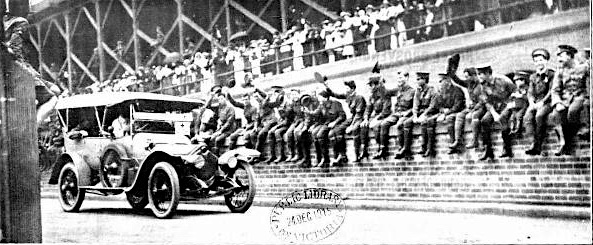 |
| Returned soldiers in Sydney, NSW, welcoming back their returning comrades, Australasian (Melbourne, Vic. : 1864 - 1946), Saturday 25 December 1915 |
 |
| Allies Day, Sydney, NSW, Leader (Melbourne, Vic. : 1862 - 1918, 1935), Saturday 27 November 1915 |
1. petty offers' boat off to the ship. 2. Sailors leaving to rejoin their ships. 3. Waiting for the boats to go off to the warships. 4. Visitors being taken in launches to ships. Australasian (Melbourne, Vic. : 1864 - 1946), Saturday 23 August 1919
The Conservatorium of Music officially opened in May 1915 with a grand
concert.
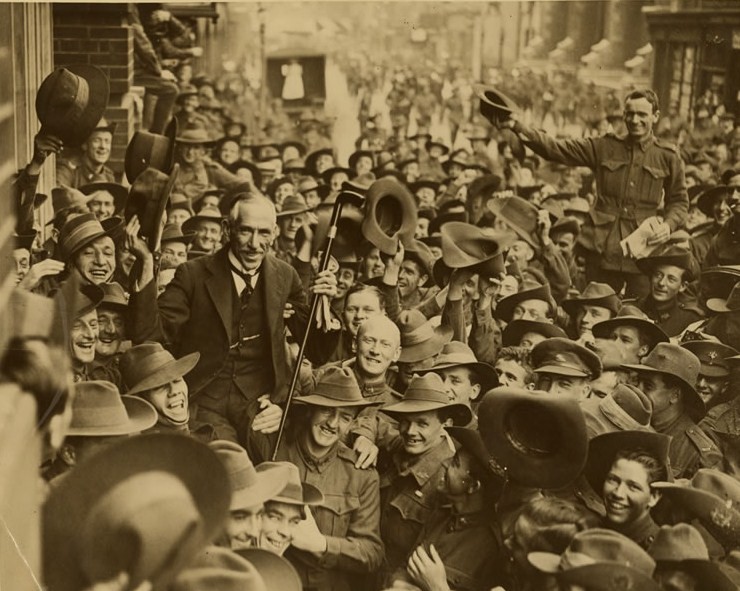 |
| Australian soldiers carrying the "little digger" Billy Hughes down George Street after he returned from the Paris Peace Conference in 1919, National Archives |
 |
| St James Railway Station decorated for the visit of Queen Elizabeth II and Prince Phillip - Elizabeth St entrance, possibly 1954 NSW State Archives |
1929, During the Great Depression, Hickson Road in The Rocks area was called The Hungry Mile because of the hundreds of men who went from wharf to wharf in search of work.
The Grace Building on York Street, Sydney, opened in 1930. The Grace Brothers, Albert Edward and Joseph Neal Grace migrated from England in the 1880s and sold goods door-to-door. They opened their first small shop in George Street, Sydney, in 1885.
 |
| Railway Square tram interchange circa 1930. L, N and O Class trams can be seen. The waiting shed in this photo has been preserved by the Sydney Tramway Museum |
 |
| Sydney Harbour Bridge celbrations, Sydney Mail (NSW : 1912 - 1938), Wednesday 23 March 1932 |
.jpg)
Australia's March to Nationhood' parade outside the Queen Victoria Building on George Street during the 1938, Royal Australian Historical Society
 |
| A wet Angel Place, Sydney, 1930s / Sam HoodNote: The bright sign almost in the middle of the photograph is for the 2UW (Sydney radio station) Concert Hall, State Library of New South Wales |
 |
| The Kodak Australia building, George Street, circa 1930s |
 |
| Anzac Day Parade on Martin Place in 1930, National Library of Australia |
 |
| Captain Francis de Groot cutting the ribbon and opening the Sydney Harbour Bridge in the name of King George V (who hadn't been invited) |
.jpg) |
| Sydney Harbour Bridge, tram, road and rail tracks and Milsons Point Station, January 1935, Royal Australian Historical Society |
Luna Park was constructed in 1935 on the northern shore of Sydney Harbour.
_(6310661386).jpg) |
| View of Milsons Point and Luna Park (NSW). No date. NSW State Records |
The Day of Mourning protest was organised by the Aborigines Progressive Association (APA), on 26 January 1938, protesting their treatment and appealing to the Australian Nation. (The Uluru Statement from the Heart is also directed to the Australian public).
 |
| Aborigines day of mourning, Sydney, 26 January 1938, State Library of NSW |
 |
| Douglas Grant, draughtsman and soldier, with his ornamental pond and Harbour Bridge, Callan Park, between 1932-1940 / photographer Sam Hood, Douglas Grant was orphaned in a tribal battle or some say, in punitive action. He had a good education and became a clever draughtsman. After working at Mort's dock he enlisted twice, because of bureaucratic rules for Aboriginal Australians and joined the 13th Battalion. He was taken prisoner at Bullecourt. State Library of New South Wales |

The AWA Tower from Wynyard Street, Sydney, in 1939. national Library of Australia
%2C_1933-1942_(15806644966).jpg) |
| Tram shots around the city of Sydney from 1933 to 1942, State Library of NSW |
At War
 |
| 6th Division boards the troopships, Pyrmont, Sydney, 9-10 January 1940 / by Sam Hood |
The first submarine was caught in anti-submarine nets, which caused the Japanese crew to self destruct by activating an explosive. The second submarine fired two torpedoes and killed nineteen Australian and two British naval officers. The third submarine was sunk by allied ships. (read more)
Sydney celebrated the end of World War II in 1945. The man filmed dancing on the street in Sydney, takes place, 15 August 1945.
Migration
Large numbers of Chinese came to Australia during the gold rush and settled around The Rocks. By the 1920s, Sydney's Chinatown moved over to Campbell Street and then to Darling Harbour and Haymarket.
 |
| Historic image of a yet unidentified man dancing in the streets of Sydney, Australia at the close of World War II (August 15, 1945) |
Migration
Large numbers of Chinese came to Australia during the gold rush and settled around The Rocks. By the 1920s, Sydney's Chinatown moved over to Campbell Street and then to Darling Harbour and Haymarket.
 |
| Chinese banquet, 58 Dixon Street, Sydney, Sam Hood, State Library of NSW |
Angelo Tornaghi, born in Milan in 1831, arrived in Sydney in 1858 at the age of 24. He was appointed to the position in charge of all government turret clocks in NSW, and became a maker of scientific instruments. One of his major achievements was the clock for the Sydney GPO.
 |
| Angelo Tornaghi, Australian Men of Mark, 1889 |
In 1855–56 hundreds of immigrants from the north of Italy and Italian-speaking areas of Switzerland migrated to Sydney, and some made Hunters Hill their home and worked as stonemasons. After WW1 there was a huge increase in Italian migration to Australia.
The first Greeks to migrate to Australia were seven sailors convicted of piracy by the British navy and transported to Australia. They arrived in August 1829. Later, after being pardoned, two of the sailors remained in Australia.
 |
| Greek Day in Sydney during World War II, State Library of Victoria |
After World War II, large numbers of Greeks migrated to Australia. Greek-born migrants became the largest postwar community in the suburb of Marrickville.
After 1975, many Vietnamese came to Australia and settled in places like the Sydney suburb of Cabramatta, after the armed forces of the Communist north seized the south of Vietnam. Many Lebanese also came to Australia at this time due to the outbreak of civil war in Lebanon. The Sydney suburb of Greenacre and Lakemba has many residents of Lebanese descent.
Migration from a Asian countries and the Middle East comprise more than half of the most recent, or "third wave" of migration to Australia.
Migration from a Asian countries and the Middle East comprise more than half of the most recent, or "third wave" of migration to Australia.
Changing Attitudes
In 1945, an unnamed woman walked along the Bondi promenade wearing a bikini and according to a Sunday Telegraph report in 1946, "caused a near riot." She was later charged with offensive behaviour.
In the late 1950s, Sydney's tram network was destroyed. It had been one of the largest in the world, but car ownership had changed how people travelled. The trams were rolled to the workshops in the city’s eastern subiurbs, stripped, tipped on their sides and set on fire. By 1961 the last tramline closed._(2).jpg) |
| Trams operating at the intersection of Barrack Street and George Street, Sydney - showing the David Jones Barrack Street store, circa1950s, NSW State Records |
In 1953, the federal Television Act was passed, providing the initial regulatory framework for both the ABC and commercial television networks. Commercial station TCN-9 Sydney was the first to broadcast in Australia.
Fort Macquarie Tram Depot was demolished in 1858 to make way for the construction of the Sydney Opera House, which began construction in 1959.
 |
| Fort Macquarie depot, Sydney, 1940s |
Times a-Changing
.jpg) |
| Last tram in operation Dated: 25/02/1961, NSW State Records |
 |
| Sydney Opera House Construction, circa 1966, Wikipedia Commons |
 |
| Oodgeroo Noonuccal, Sydney, 1970, Meeting at Sydney's Foundation for Aboriginal Affairs to discuss the bicentenary of James Cook's arrival. State Library of New South Wales |
The Granville train disaster occurred on Tuesday 18 January 1977, at Granville. It remains the worst rail disaster in Australian history.
The Australian Bicentenary was celebrated in 1988. It marked 200 years since the arrival of the First Fleet of British convict ships at Sydney in 1788. The day has also been called Foundation Day, Survival Day and Invasion Day.
The Australian Bicentenary was celebrated in 1988. It marked 200 years since the arrival of the First Fleet of British convict ships at Sydney in 1788. The day has also been called Foundation Day, Survival Day and Invasion Day.
Read the deep and perceptive thoughts of Stan Grant, an Australian of Wiradjuri, Gamilaroi and Irish heritage, on the subject of Australia Day here
 |
| The Søren Larsen taking part in a tall ships race across the harbour, Sydney, New South Wales, Australia (1989) GothPhil |
Around Sydney
| Hyde Park Barracks, Macquarie Street, Sydney, Australia, circa 1817, J Bar |
| Government House, Sydney, circa 1837, located within the Royal Botanic Gardens, entry is from Macquarie Street, Diego Delso |
 |
| Parliament House, Sydney, near the southern terminus of Macquarie Street. Originally the northern wing of Sydney Hospital, constructed between 1811 and 1816, Adam.J.W.C |
 |
| The first use by the British colonial administration of the land on which the Campbell's Bond Stores were built appears to have been to graze sheep on the shores of what had yet to be named Campbell's Cove. The land was leased to Henry Waterhouse, commander of the Reliance, in 1794. Two years later he went to the Cape of Good Hope and brought back a flock of sheep from Spain, which were the first merinos to arrive in New South Wales. More |
 |
| The Rocks, Sydney, NSW |
| Former Bank of New South Wales building, on the corner of Bathurst Street, Sydney, circa 1894, Hermione9753 |
| St Andrew's Cathedral, west side, The cathedral was built from 1837 to 1868, Hermione9753 |
| The Chief Secretary's building, constructed in circa 1878, consisting mainly of dressed sandstone |
| The Department of Education building is a six-storey, sandstone building, built circa 1912 |
| The Burns Philp Building, 5-11 Bridge Street, Sydney, built from 1899 to 1900 |
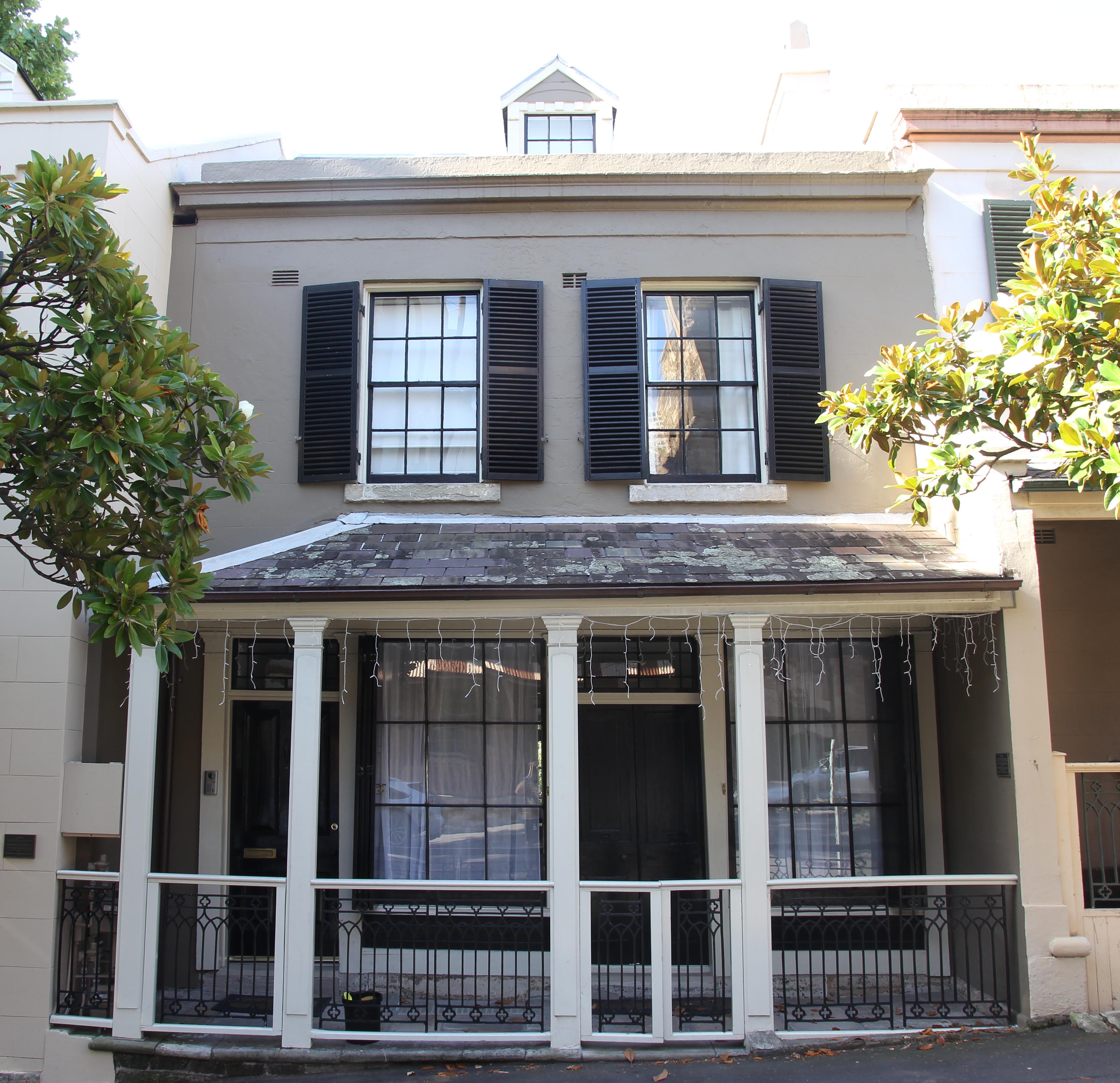 |
| 82-84 Windmill Street, Millers Point in the City of Sydney, New South Wales, Australia, circa 1860, Rangasyd |
 |
| The Australian Museum, College Street, Sydney. Construction started 1846 by Greg O'Beirne |
 |
| Cyprus Hellene Club - Australian Hall, 150-152 Elizabeth Street Sydney, was the site of the Day of Mourning protests by Aboriginal Australians on 26 January 1938, built 1910–1913. Collywolly |
 |
| The Anzac Memorial, Sydney, Hyde Park, built from 1932 to 1934, Hpeterswald |
 |
| Capitol Square Hotel on the corner of George and Hay St in Sydney, built 1876-1877, Bidgee |
Police_Courts_Sydney-1.jpg) |
| Central Court (Police Court), Liverpool St, Sydney, completed 1892, Sardaka |
 |
| Foy brothers opened Mark Foy'sPiazza Store in 1909 on Liverpool Street, Sydney, NSW, g_kat26 |
Waimea_in_Waimea_Avenue_Woollahra.jpg) |
| "Waimea", circa 1856, Victorian Georgian house, Waimea Avenue, Woollahra, NSW |
 |
| Department of Lands building, in the Classical style, building commenced 1892, will be refurbished into a hotel, petamini_pix |
| The Metropolitan Fire Station in Castlereagh Street, operated continually since 1888 as a first station by Fire and Rescue NSW, Adam.J.W.C |
Pitt_St_Uniting_Church-4.jpg) |
| Pitt Street Congregational Church, Sydney, built from 1841 to 1846. There have been several attempts to demolish the building |
_-_Sydney%2C_NSW_(7889991666).jpg) |
| Heritage-listed former water police station, offices and courthouse, located at 4-8 Phillip Street, built from 1854 to 1886 |
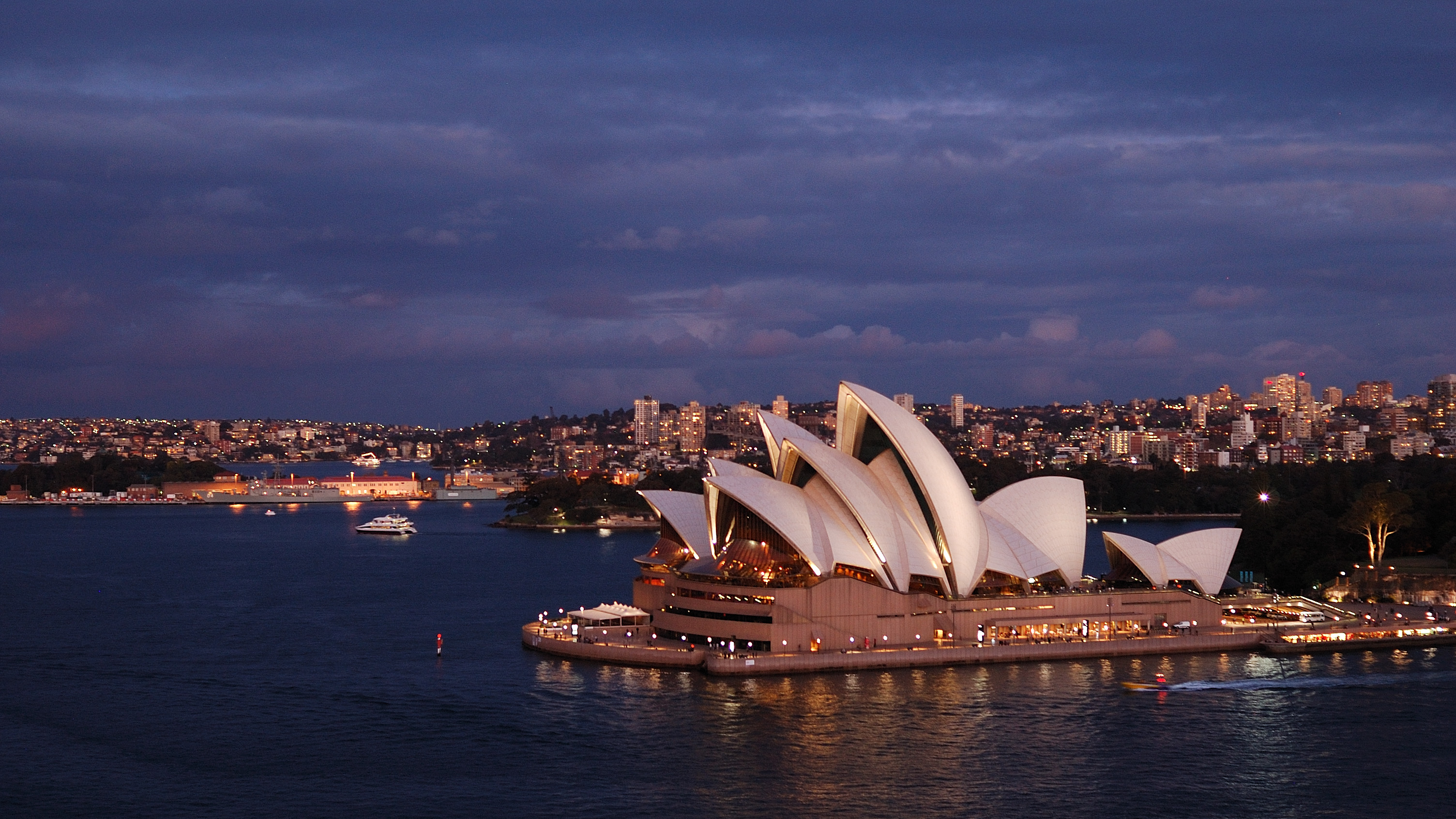 |
| The Sydney Opera House, designed by Danish architect Jørn Utzon, opened in 1973. Rosino |
| The Strand Arcade, Sydney, built 1892 |
 |
| Former ANZ Bank building, Oxford Street, Darlinghurst, Commissioned by the London Bank in 1912 Sardaka |
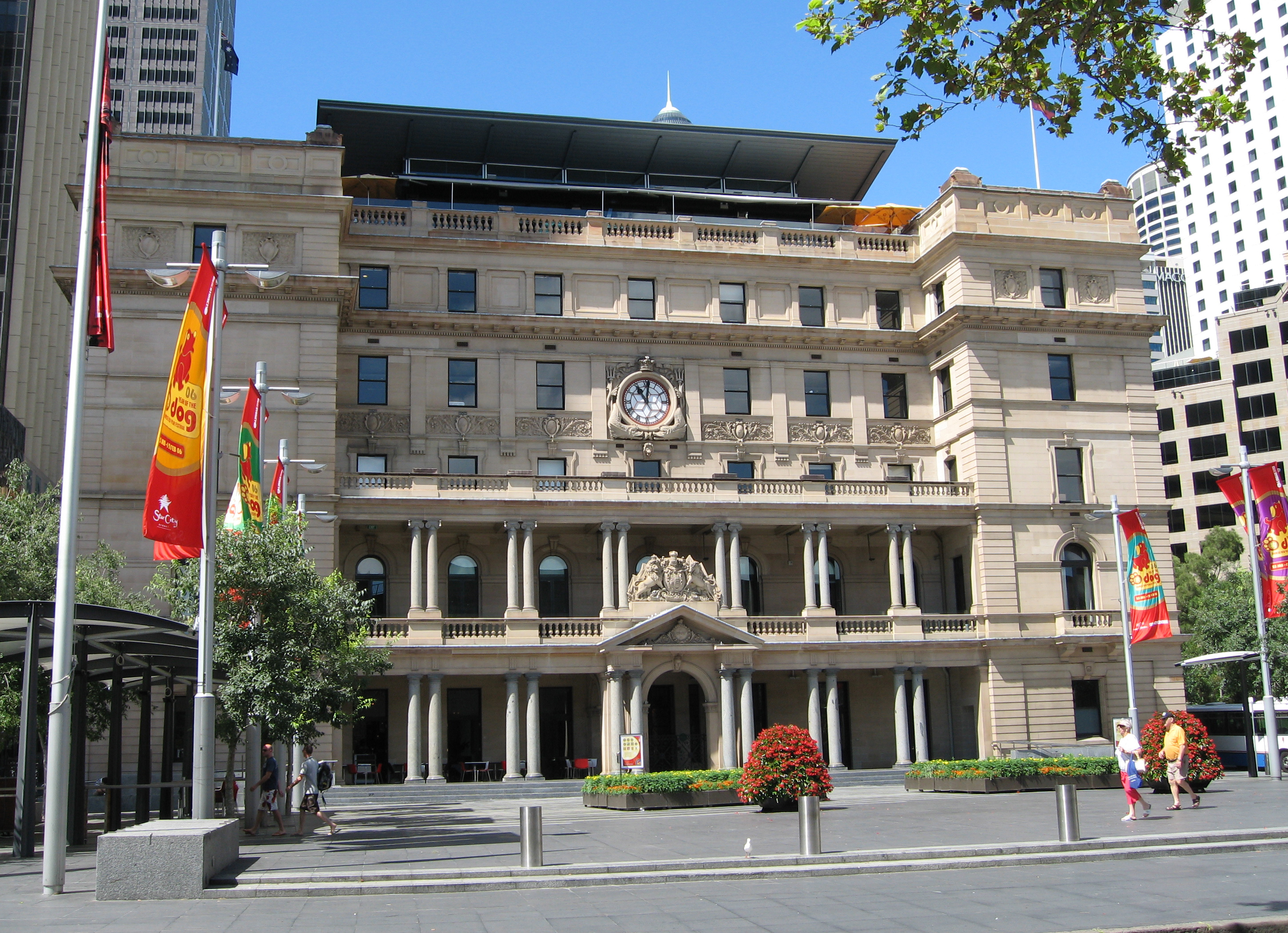 |
| Customs House, Sydney, built 1845 to1887, by Greg O'Beirne |
Bank_of_NSW_Broadway_Sydney-4.jpg) |
| Historic building, on Broadway, Sydney, built in the 1890s as the first branch of the Bank of New South Wales |
 |
| The General Post Office, Martin Place, Sydney, completed 1891. Freehold over the building had been sold to Far East Organisation and Sino Land |
| The Old Registry Office of the Supreme Court of New South Wales, built from 1859 to 1862 |
| Paddington Town Hall , Sydney, circa 1890 |
 |
| The Queen Victoria Building in Sydney Adam.J.W.C. |
 |
| Luna Park, North Sydney, Australia, Built and opened in 1935, Cabrils |
 |
| Waverley Cemeteryis an heritage-listed cemetery on top of the cliffs at Bronte in the eastern suburbs of Sydney |
 |
| Heritage-listed, Addington House was built between 1794-1841. It is the oldest surviving building in Ryde, NSW |
 |
| Federation Bungalow, Appian Way, Burwood, NSW, Sardaka |
 |
| Bankstown Reservoir, in the Federation Free Classical style, established in 1920 Meganesia |
cottage_Oxford_Street-1.jpg) |
| Cottage in Arts and Crafts style, Bondi Junction, Sydney, NSW, Sardaka |
 |
| Juniper Hall, also known as Ormond House, located at 1 Ormond Street, Paddington, built circa 1825, Sardaka |
.jpg) |
| Historical house called the Abbey in Annandale, Sydney, built 1882, Adam.J.W.C. |
| 871 George St, Sydney NSW, constructed in the Victorian Mannerist style, circa 1898 |
 |
| Glebe point road, Sydney, looking south, Adam.J.W.C |
| The "Crest" Theatre/Ballroom in Blaxcell Street (corner Redfern st), Granville, NSW, built in 1948 |
Ritz_Cinema.jpg) |
| The Ritz Cinema, 43 St Pauls Street, Randwick, built 1937 |
| Robin Hood Hotel, Bronte Road, Waverley, NSW, building in an Ocean Liner/International style, built from 1915-1945 |
| Old Canterbury Hospital building, Canterbury, officially opened on 26 October 1929 |
Sydney Jewish Museum
Sydney Royal Mint
Experiment Farm Cottage is a National Trust managed historic house built in the 1830s on a piece of land originally granted to convict farmer James Ruse
The Australian Frontier Wars, 1788-1838, By John Connor
Dancing with Strangers: Europeans and Australians at First Contact, by Inga Clendinnen
Napoleon's Australia, by Terry Smyth
Sydney Noir: the golden years, by Michael Duffy and Nick Hordern
Talking to My Country, by Stan Grant
Mary Reibey, by Kathleen Pullen
Experiment Farm Cottage is a National Trust managed historic house built in the 1830s on a piece of land originally granted to convict farmer James Ruse
Rose Seidler House
Museum of Fire, Penrith
Casula Powerhouse
HMAS Onslow
Museum of Freemasonry
The Australian History Museum Macquarie University
Museum of Fire, Penrith
Casula Powerhouse
HMAS Onslow
Museum of Freemasonry
The Australian History Museum Macquarie University
Nicholson Museum Sydney University, More than 30,000 artefacts of artistic and archaeological significance from Egypt, Greece, Italy, Cyprus and the Middle East.
Books To Read
Books To Read
The Australian Frontier Wars, 1788-1838, By John Connor
Dancing with Strangers: Europeans and Australians at First Contact, by Inga Clendinnen
Napoleon's Australia, by Terry Smyth
Sydney Noir: the golden years, by Michael Duffy and Nick Hordern
Talking to My Country, by Stan Grant
Mary Reibey, by Kathleen Pullen













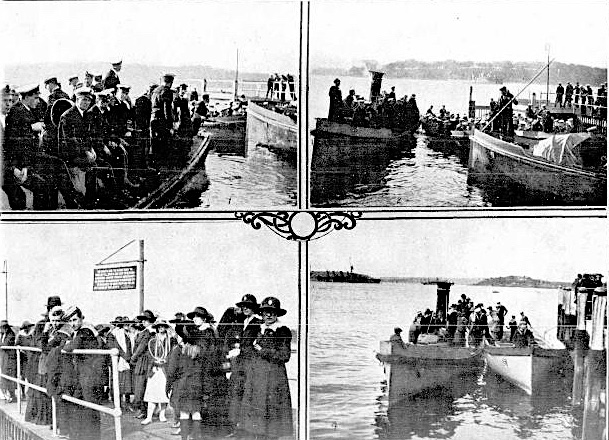

.jpg)

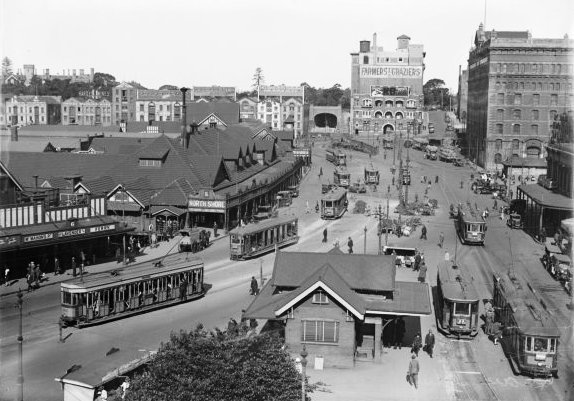





Commercial_Banking_Company_George_Street.jpg)
